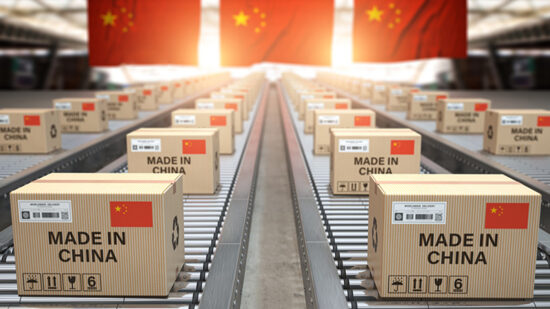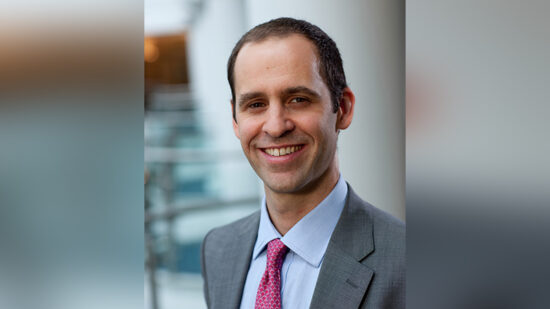Labour policy lays solid foundations
The Labour Party’s election victory in June is set to stand the £1.6bn JOHCM UK Equity Income fund in good stead, according to its co-manager James Lowen (pictured below), who explained the government’s housing policy will offer “multi-dimensional benefits” to the portfolio.
As at the end of June 2024, JOHCM UK Equity Income has a 10% exposure to the UK housing market. While it holds housebuilders such as Vistry Group and Bellway, these weightings have been trimmed due to strong performance, meaning both account for a combined 1.75% of the fund.
Instead, Lowen and co-manager Clive Beagles hold a number of building suppliers, such as shower manufacturer Norcros, brick suppliers Ibstock and Forterra, and UPVC window frame manufacturer Eurocell.
“The Labour victory is very good for this fund,” Lowen said. “Its housing policy is to build 300,000 new houses per year. The Conservative quota has been 140,000. Even if Labour gets to 200,000, which is significantly below target, it is still 40% higher than current levels.”
Eurocell, which has a 20% market share of window frame production, also boasts solid environmental credentials that factor into its longevity as a business, according to Lowen.
“It is the biggest recycler in the sector,” the co-manager said. “When windows are taken out, the pieces are collected and taken to a factory. The plastic from these old windows is made into pellets, which are then used to make new windows. Around 28% of [Eurocell’s] windows are made from recycled materials. This really has a positive impact on its oil and carbon footprint.”
Building suppliers account for about 4% of the fund. A further 4.5%, also set to benefit from Labour’s housing policy, is held across retail stocks tied into the housing market. These include Currys, DFS, flooring company Headlam Group and Wickes.
“DFS performed well during lockdown as everyone was ordering sofas,” Lowen reasoned. “Over the past three years it has been sluggish, but now we are starting to come through the other side of that purchasing cycle again.
“The other good thing about DFS is that its competitors have gone bankrupt. It now has a 40% market share, so it’s in a really dominant position.”
The manager said Currys has a similar story to DFS, in that it had a strong year in 2020 followed by a three-year lull. “It’s a market leader in the Nordics as well as the UK. It had a Covid surge because everyone bought new laptops and TVs, then hit a post-Covid low.
“But not only are we coming out of that now, it is being driven by the Labour government, as well as a change in the cost of living. Households are, on average, 10% better off this year than they were last year.
“It has also seen AI Microsoft products come into its stores, making it only one of two players globally for the consumer rollout of Microsoft Copilot laptops.”
Lowen added: “With UK macro improving, we like to call these types of undervalued domestic UK small-caps ‘coiled springs’. They could see 10x normalised earnings per share, which could end up giving us 200-300% upside.”
Mirabaud’s Narula bags a bargain at TK Maxx
While high streets face a battle to keep stores open as shoppers increasingly move online, the appeal of bargain-hunting continues to attract footfall to stores such as TK Maxx.
Parent company TJX is a market leader in off-price retailing, a format based on discount pricing relying on the purchase of excess goods from designer brands.
“It’s a treasure hunt format,” said Anu Narula, Mirabaud Asset Management’s head of global equities and manager of the firm’s Sustainable Global Focus fund.
“Consumers go in there to get the best brands at the lowest prices.”
TJX has over 4,900 stores in nine countries, across brands including TJ Maxx, TK Maxx in Europe and Australia, and HomeGoods and Homesense.
Narula said the firm is the market leader and, as ‘off-price’ makes up only 2% of overall retail, there is still a runway for growth.
TJX made up 4.5% of the £181m Sustainable Global Focus fund at the end of June, making it the strategy’s fifth-largest position.
“The real advantage for TJX is the link-up with the brand companies that are already in place. They’ve had years of building out that and have a rapid turn of inventory compared with traditional retailers.”
“They’re expanding into more areas like beauty, for example, which is going very well for them,” he added. “They’ve also built more of an e-commerce online strategy in recent years. This is a company that offers what we call ‘defensive growth’. It’s a really good compounder, with mid-single-digit same-store sales growth consistently, a little bit of operating margin leverage and very strong returns on investor capital and done with double-digit earnings.
“This is a company we look to put away as it can do a good job for us from a portfolio construction point of view when it’s risk-off, as we’ve seen in recent weeks, but can also then keep up with a growing market as well.”
While the firm has invested in its e-commerce business, Narula circles back to the ‘treasure-hunt’ concept as a key factor in the physical stores bucking the trend as retailers increasingly move online.
“As the high-street brands are scaling back in their physical presence, more of their produce can go through places like TK Maxx. They need different ways of distributing and TK Maxx is an area that benefits disproportionately from that.”
TJX shares were up 21.2% from the beginning of the year to the end of July. Narula manages the Sustainable Global Focus fund alongside co-manager Paul Middleton. The ‘best ideas’ portfolio is made up of 25 to 35 positions in firms it believes are market leaders, which are well placed to benefit from sustainable themes and can grow across cycle.
Brunner Trust takes to the skies
Julian Bishop, portfolio manager of the Brunner Trust, made one thing clear about his position in General Electric: “This is not your grandfather’s GE.”
GE has long been an established name in the US market. In 1999, it had a market cap of $451.7bn (£346.75bn) and until the stockmarket began to collapse in 2008, its market cap remained over $300bn for all but two years. But General Electric’s share price fell from near $200 in September 2007 to about $40 by February 2009.
“It’s now used as a classic business case study of managerial hubris and overstretch. You had Jack Welch and his successor, Jeffrey Immelt,” Bishop said. “Immelt moved from a core industrial business to loads of financial concerns that went wrong after the great financial crisis. It was a real disaster for a long time. The industrial business has slowly been dismantled and broken up into component parts.”
Under CEO Larry Culp, who took up the role in 2018, the company has rid itself of its finance branch, appliance business and partial ownership of NBC. In 2021, GE announced it would separate into a variety of businesses, including GE Healthcare, GE Vernova and GE Aerospace. GE Aerospace has held onto the GE stock name – as well as CEO Culp. Over the past year, the share has price has recovered with a near 90% increase. Now, GE has focused its sprawling enterprise on jet engines.
“If you’ve flown on a plane recently, the overwhelming odds are that it had a GE engine. Three out of every four commercial flights that take off worldwide are powered by a GE engine. It’s an extraordinary market position. There’s a little bit of competition in wide-body long-haul planes from Rolls-Royce in the UK, and from Pratt & Whitney in short-haul planes,” Bishop said, “but GE is the market leader by a by a long stretch. It has a $2bn research and development budget, which is more than everyone else combined. ”
While GE seems to be on the road to becoming a steady business, its main customers have spent the year weathering the storm. Boeing has watched its share price collapse by near 25% this year following a flurry of setbacks after a door broke away from a plane mid-flight in January.
However, Bishop said GE creates some distance from the immediate downfalls and successes of its competitors because it does not rely on the sale of the engines as its profit maker, but rather the upkeep.
“Their customers are constantly short of cash. Airlines are tricky businesses,” Bishop said. “The customers want to pay the smallest upfront payment as possible, and then to pay ‘power by the hour’ contracts. For every hour a plane is in the sky, they will pay GE. It’s like a Netflix subscription. These engines last 30 years, so for as long as that engine is in use, they get paid for spare parts and servicing. So it’s a great steady income stream for every new engine that goes into circulation.”
This article first appeared in the September issue of Portfolio Adviser magazine






